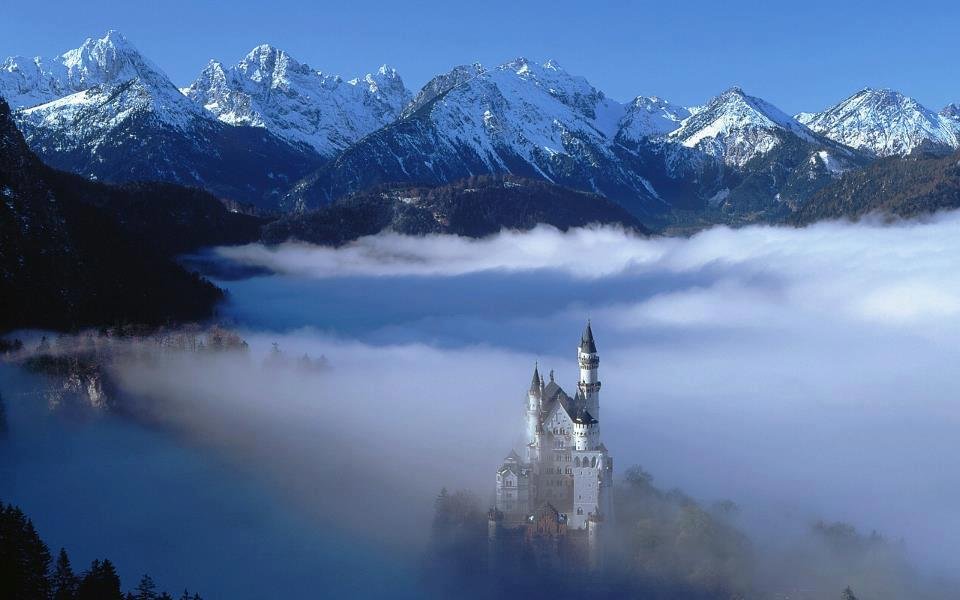 Neuschwanstein Castle
Neuschwanstein CastleSource: https://commons.wikimedia.org/wiki/Category:Neuschwanstein_Castle#/media/File:1_Nature_1.png
Author: Sina Arman

Germany is a country in Central Europe. It is a beautiful country with well-preserved old towns and a wealth of culture and festivals. Within Germany are plenty of places to explore and good food to taste.
Germany is located on the central part of western Europe. It shares a border with more countries in western Europe than any other, being bordered by Denmark to the north, Poland to the east, the Czech Republic to the southeast, Austria and Switzerland to the south, France to the southwest, and Luxembourg, Belgium and the Netherlands to the east. With a population exceeding 80 million people, it is the most populous country within the European Union. Having the fourth largest economy by nominal GDP in the world, Germany is also the wealthiest country within the European Union.
Germany comprises 16 states. Its capital is within the city-state of Berlin. There are two types of states in Germany, namely the "area states" known as Flächenländer and the "city states" or Stadtstaaten. The area states are presently Baden-Württemberg, Bavaria, Hesse, Lower Saxony, North Rhine Westphalia, Rhineland-Palatinate and Schleswig-Holstein on the former West Germany, and Brandenburg, Mecklenburg-Vorpommern, Saxony, Saxony-Anhalt and Thuringia on the former East Germany. The city states are Bremen, Hamburg and the federal capital, Berlin.
City States of Germany
Area States of Germany
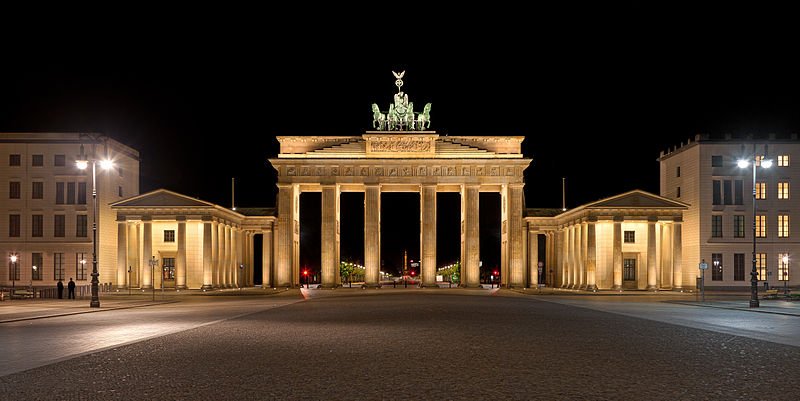 Brandenburg Gate, Berlin
Brandenburg Gate, BerlinSource: https://commons.wikimedia.org/wiki/File:Brandenburger_Tor_nachts_2012-07.jpg
Author: Thomas Wolf

 Marksburg, a fortress above the town of Braubach in Rhineland-Palatinate
Marksburg, a fortress above the town of Braubach in Rhineland-PalatinateSource: https://commons.wikimedia.org/wiki/File:Marksburg-Braubach.jpg
Author: Tobi 87

World Heritage Sites in Germany
Germany ratified the World Heritage Convention on 23 August, 1976. As of August 2010, it has 33 World Heritage Sites of which 31 are in the cultural category and two in the natural category. Germany is one of the few countries with one site having been removed from the World Heritage Site list. Germany also has another 15 sites on the World Heritage Tentative List.- Aachen Cathedral
- Speyer Cathedral
- Würzburg Residence with the Court Gardens and Residence Square
- Pilgrimage Church of Wies
- Castles of Augustusburg and Falkenlust at Brühl
- St Mary's Cathedral and St Michael's Church at Hildesheim
- Roman Monuments, Cathedral of St Peter and Church of Our Lady in Trier
- Frontiers of the Roman Empire
- Hanseatic City of Lübeck
- Palaces and Parks of Potsdam and Berlin
- Abbey and Altenmünster of Lorsch
- Mines of Rammelsberg and Historic Town of Goslar
- Maulbronn Monastery Complex
- Bamberg World Heritage Site
- Collegiate Church, Castle, and Old Town of Quedlinburg
- Völklingen Ironworks
- Messel Pit Fossil Site
- Bauhaus and its Sites in Weimar and Dessau
- Cologne Cathedral
- Luther Memorials in Eisleben and Wittenberg
- Classical Weimar
- Museumsinsel (Museum Island), Berlin
- Wartburg Castle
- Garden Kingdom of Dessau-Wörlitz
- Monastic Island of Reichenau
- Zollverein Coal Mine Industrial Complex in Essen
- Historic Centres of Stralsund and Wismar
- Upper Middle Rhine Valley
Dresden Elbe Valley(Delisted 2009)- Muskauer Park / Park Muzakowski
- Town Hall and Roland on the Marketplace of Bremen
- Old town of Regensburg with Stadtamhof
- Berlin Modernism Housing Estates
- The Wadden Sea, Germany/Netherlands
- Fagus Factory in Alfeld (2011)
- Prehistoric Pile dwellings around the Alps (2011, join inscription for Switzerland, Austria, France, Germany, Italy and Slovenia)
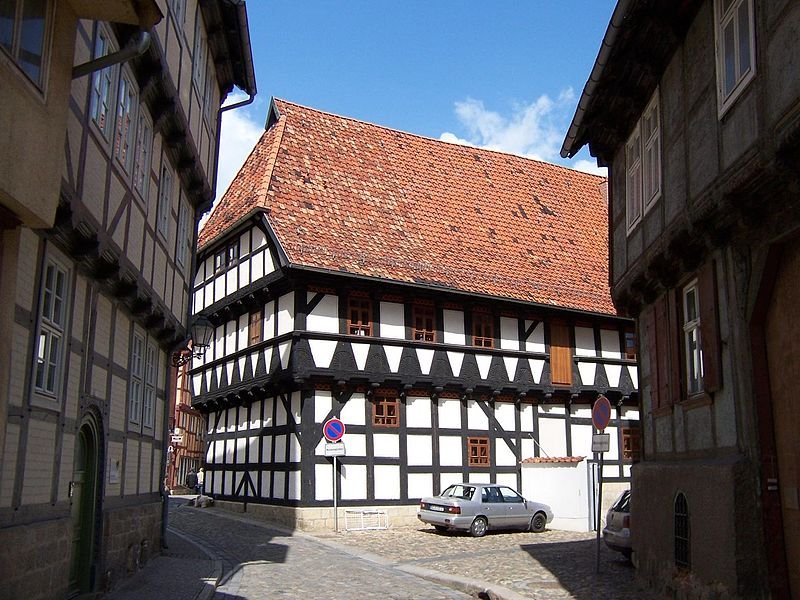 Half-timbered houses in Quedlinburg
Half-timbered houses in QuedlinburgSource: https://commons.wikimedia.org/wiki/File:Quedlinburg_Fachwerkh%C3%A4user.JPG
Author: Jungpionier

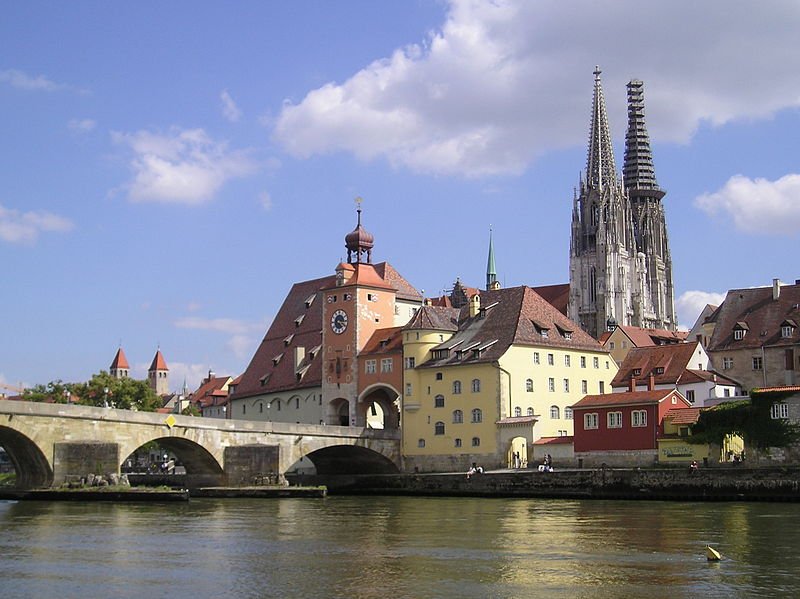 Regensburg
RegensburgSource: https://commons.wikimedia.org/wiki/File:Stadtansicht_Regensburg.JPG
Author: HH58

When to visit Germany
You may visit Germany at any time of the year. For sunny weather, the best time is between May and September. This is however the most crowded time, whether you are visiting the museums or the beaches, and there are traffic jams going through the narrow country roads. Between November and March, the skies tend to be overcast and crowds will be less, except perhaps in the sky resorts.What to wear in Germany
Lightweight to medium weight clothing is needed for summer, depends on how the weather turns. For winter, you need medium to heavyweight clothing.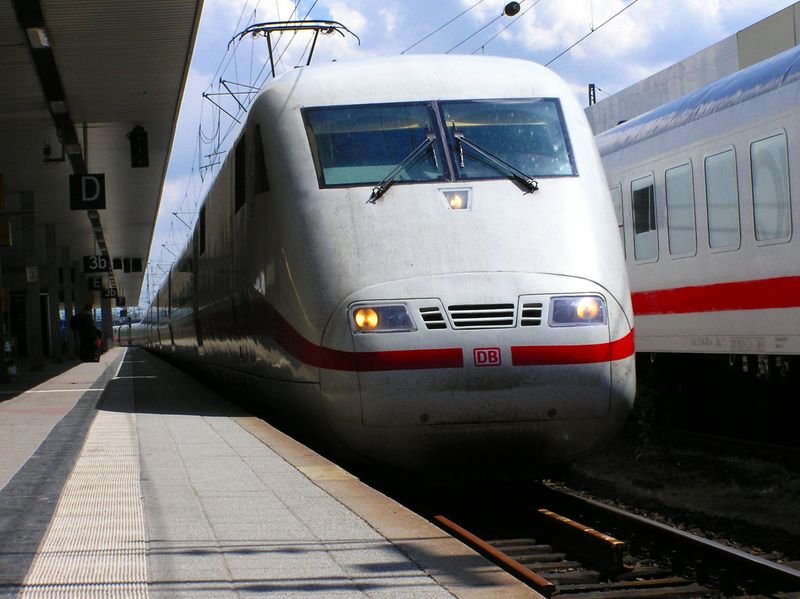 ICE Intercity-Express Train
ICE Intercity-Express TrainSource: https://commons.wikimedia.org/wiki/File:ICE_Intercity-Express_Train.jpg
Author: Dejanmilo

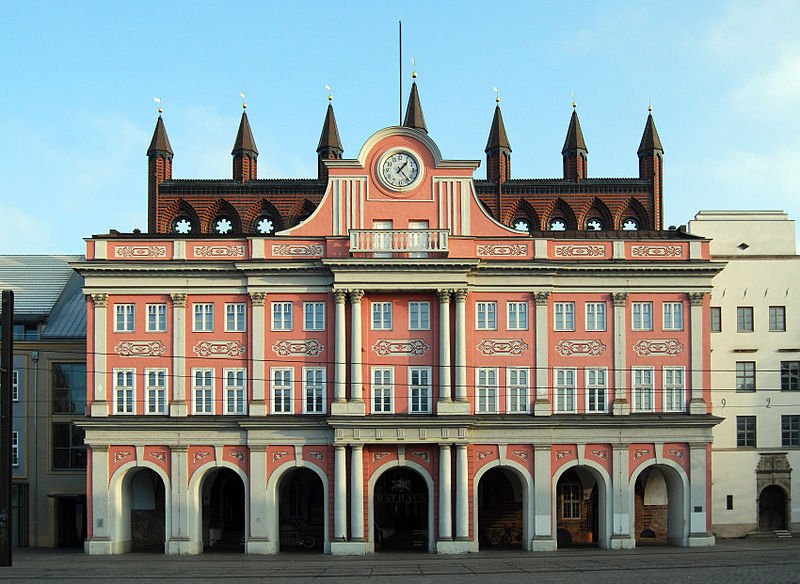 Rostock City Hall in Mecklenburg-Vorpommern
Rostock City Hall in Mecklenburg-VorpommernSource: https://commons.wikimedia.org/wiki/File:Rostock_city_hall.jpg
Author: Rob

Getting into Germany
The biggest airport in Germany as well as Europe is Frankfurt-am-Main International Airport (FRA) followed by Munich International Airport (MUC). Other major airports in Germany are Düsseldorf International Airport (DUS), Berlin Airport (TXL) Cologne-Bonn Airport (CGN) and Hamburg (HAM).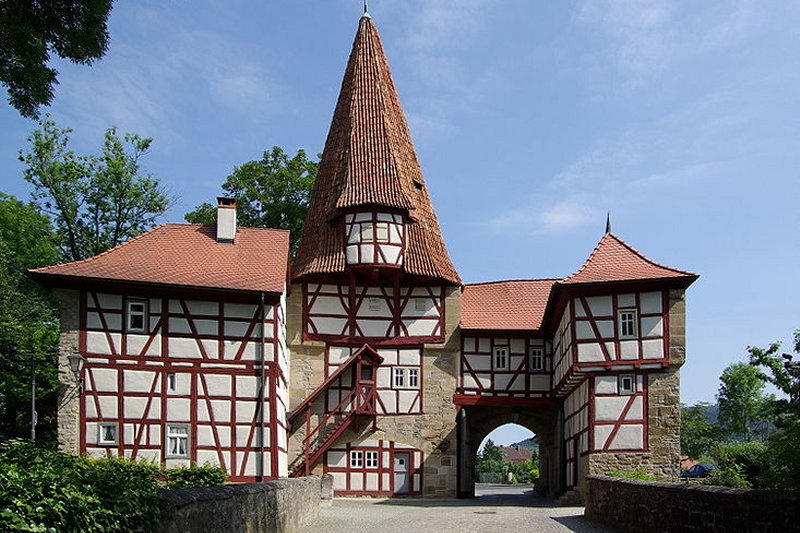 Rödelseer Tor, a 15th century gate in Iphofen, Bavaria
Rödelseer Tor, a 15th century gate in Iphofen, BavariaSource: https://commons.wikimedia.org/wiki/File:Iphofen_BW_2.jpg
Author: Berthold Werner

Germany Entry Requirements
Nationals of US, Australia, Canada, Britain and other EU countries do not need a visa to enter Germany.Planning your travel within Germany
Perhaps the best way to explore Germany is by car. The country has an excellent road network. The Autobahn (motorway) does not require toll for cars (trucks have to pay), but price of gasoline is kept high, at €1.40 per liter. You can easily rent a car to drive in most cities.Another good way to explore Germany is by train. The national railway company, Deutche Bahn is a reliable and comfortable way to go around in Germany.
 Tübingen marketplace
Tübingen marketplaceSource: https://commons.wikimedia.org/wiki/File:T%C3%BCbingen_Marktplatz_2.JPG
Author: Prissantenb&aulm;r

Money matters in Germany
Germany uses the Euro, €. Banknotes are in denominations of €500, 200, 100, 50, 20, 10 and 5 while coins are in denominations of 1 cent, 2 cents, 5 cents, 10 cents, 20 cents, 50 cents, €1 and €2. Banking hours are from 8:30am to 1:00 pm and 2:00pm to 4:00pm for Mondays to Fridays except Thursdays 8:30am to 1:00pm and 2:30pm to 5:30pm. Latest updates on Penang Travel Tips
Latest updates on Penang Travel Tips

Copyright © 2003-2025 Timothy Tye. All Rights Reserved.

 Go Back
Go Back